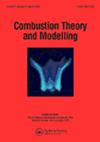四种废生物质的热解及其反应动力学和热解产物的阐明
IF 1.6
4区 工程技术
Q4 ENERGY & FUELS
引用次数: 1
摘要
随着生物能源作物的增加和农业的快速发展,固体废物的总量正在迅速增加。本研究采用(衍生)热重(D)TG)、傅立叶变换红外光谱(FTIR)和质谱(MS)分析方法,定量了废咖啡渣(SCG)、中药渣(CMR)、酒糟(VI)和茶花油壳(COS)的热解性能和气态产物。质量损失主要有两个阶段:挥发物的挥发和大分子的连续分解。在20°C/min的加热速率下,与其他三种相比,COS的热解速率最慢。无模型方法:使用Flynn Wall Ozawa(FWO)和Kissinger Akahira Sunose(KAS)计算不同转化率(α)样品的活化能(E)。SCG和VI具有最高的平均活化能(约240kJ/mol),其次是CMR(200kJ/mol)和COS最低(175kJ/mol。FTIR主要用于检测官能团类型(包括羟基、羰基、醛基和酯基等),而MS共同检测可冷凝/不可冷凝气体的特征(包括H2O、CO2、NOx、SOx、C6H6、C7H8、C9H8等主要气体排放、污染物和碳氢化合物)。氮氧化物在500–800°C的温度范围内产生。SCG和VI比CMR和COS排放更多的气体污染物。本文章由计算机程序翻译,如有差异,请以英文原文为准。
Pyrolysis of four waste biomasses and elucidation of reaction kinetics and pyrolytic products
With the increase of bioenergy crops and the rapid development of agriculture, the total amount of solid waste is increasing rapidly. This study quantified the pyrolytic performance and gaseous products of spent coffee grounds (SCG), Chinese medicine residue (CMR), vinasse (VI) and camellia oil shell (COS) by using (derivative) thermogravimetric ((D)TG), Fourier transform infrared spectrometry (FTIR) and mass spectrometry (MS) analyses. There are two main stages of mass loss: volatilisation of volatiles and continuous decomposition of macromolecules. At a heating rate of 20°C/min, COS has the slowest pyrolysis rate compared to the other three. Model-free methods: Flynn-Wall-Ozawa (FWO) and Kissinger-Akahira-Sunose (KAS) were used to calculate the activation energy (E) of samples with different conversion rates (α). SCG and VI have the highest average activation energy (about 240kJ/mol), followed by CMR (200kJ/mol), and COS the lowest (175kJ/mol). FTIR was mainly used to detect functional group types (including hydroxyl, carbonyl, aldehyde and ester groups, etc.), while MS co-detected the characteristics of condensable/non-condensable gases (including H2O, CO2, NOx, SOx, C6H6, C7H8, C9H8 and other major gas emissions, pollutants and hydrocarbons). Nitrogen oxides are produced in the range of 500–800°C. SCG and VI emit more gas pollutants than CMR and COS.
求助全文
通过发布文献求助,成功后即可免费获取论文全文。
去求助
来源期刊

Combustion Theory and Modelling
工程技术-工程:化工
CiteScore
3.00
自引率
7.70%
发文量
38
审稿时长
6 months
期刊介绍:
Combustion Theory and Modelling is a leading international journal devoted to the application of mathematical modelling, numerical simulation and experimental techniques to the study of combustion. Articles can cover a wide range of topics, such as: premixed laminar flames, laminar diffusion flames, turbulent combustion, fires, chemical kinetics, pollutant formation, microgravity, materials synthesis, chemical vapour deposition, catalysis, droplet and spray combustion, detonation dynamics, thermal explosions, ignition, energetic materials and propellants, burners and engine combustion. A diverse spectrum of mathematical methods may also be used, including large scale numerical simulation, hybrid computational schemes, front tracking, adaptive mesh refinement, optimized parallel computation, asymptotic methods and singular perturbation techniques, bifurcation theory, optimization methods, dynamical systems theory, cellular automata and discrete methods and probabilistic and statistical methods. Experimental studies that employ intrusive or nonintrusive diagnostics and are published in the Journal should be closely related to theoretical issues, by highlighting fundamental theoretical questions or by providing a sound basis for comparison with theory.
 求助内容:
求助内容: 应助结果提醒方式:
应助结果提醒方式:


